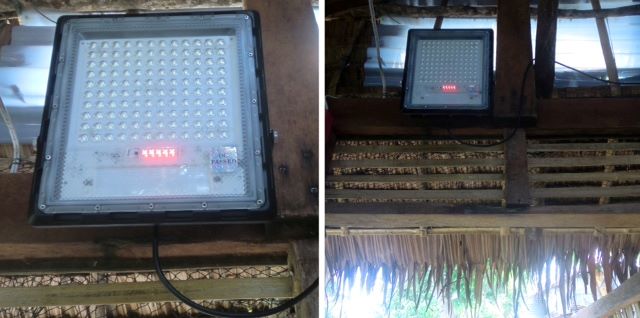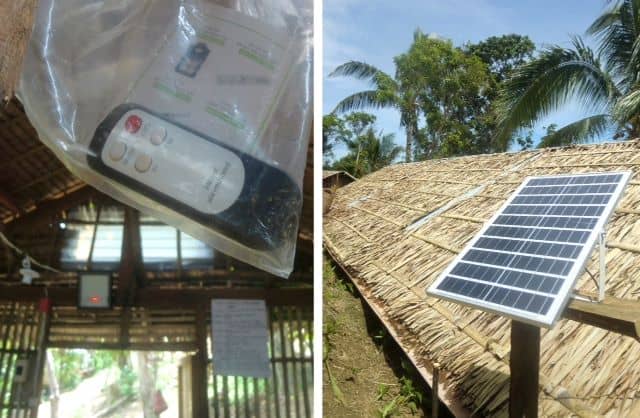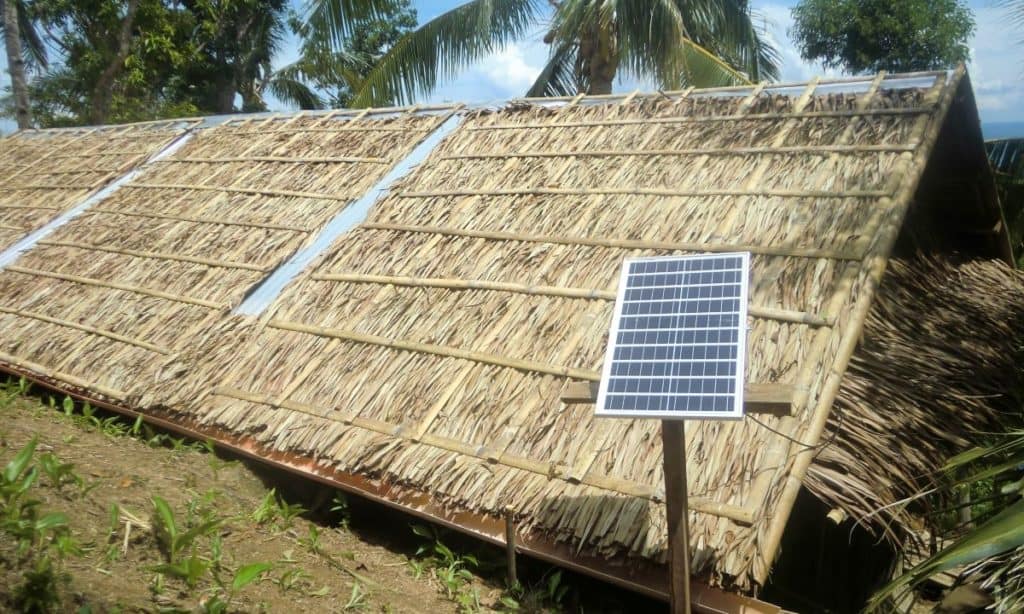Last Updated on October 27, 2024 by Ellen
Let there be light.
Yes, in the photo above, that is a solar light panel on the roof of the Ati hen house in Malay, Aklan on Panay Island in the Philippines.
The hen house and 140 birds inside actually belong to the Ati, a disadvantaged indigenous Filipino people. With the help of many generous overseas donors, we recently rebuilt the chicken coop and restarted the egg-laying operation after it was destroyed by a typhoon last December.
The solar panel and light is the latest addition to the project as we continue to fine-tune various aspects of the endeavor.
The added light was encouraged by the chicken farm representative who supplied the ‘ready-to-lay’, Lohmann LSL Classic breed hens last week. According to him, egg production can be maximized by providing 14 to 16 hours of light per day for the laying hens.
Nature provides 11 to 12 daylight hours throughout the year, based on the latitude of the Philippines. Obviously, to get more than that, artificial light must be added.
In more northern locales, seasonal daylight hours vary much more drastically. Less light causes hormonal changes in birds. In fact, chickens can stop laying eggs completely during winter months. That is not a possibility here.
Still, to comply with the chicken farm expert’s instructions – and provide our hens with every incentive to produce eggs – we have installed the outside panel and inside light.
Total cost; about $62.
Ati solar light

The hen house is wired for standard electrical service. But the local electric utility company has yet to connect power to the Ati village atop the small mountain where the structure is located.
That process could still take some weeks – especially with seasonal rains increasing. Not wanting to wait and wonder, we added the solar system now.
The ‘unnatural light’ will be introduced gradually, so as not to unnecessarily shock or confuse our birds. A half-hour of additional light per day will be added each week for the next eight weeks until the light will be in operation from 6:00 p.m. until 10:00 p.m. every night.
The light is a Chinese made system; panel and matching 120 watt flood light. Brand: NSS. Online research revealed positive reviews. The company makes a number of solar panels and products.
We were lucky to find the set for sale here in our small Philippine town. Online ordering was possible but COVID-related shipping time and reliability unknown. Testing and purchasing it locally was worth the few extra dollars at retail.
Adjustments
I have yet to personally witness the light in use. But the Ati who manage the hen house say it is plenty bright. I did notice the LED bulbs produce a bluish-white light.
I may add some kind of filter to make it more yellow – like sunlight. Or at least ‘bounce’ the light off the dried-palm ceiling to soften and diffuse it.

The only other issue with the light is the absence of any manual on/off switch. It is operated only with a remote control. God forbid the remote gets dropped, wet, lost, broken… no way to turn on/off the light.
The current solution: keep the remote inside a thick plastic bag, hung up high. Easy on/off access. No need to ever remove or handle it. Concern abated.
Let there be eggs.
As always, be thankful and generous, happy trails & more beer.
Life is NOW!
Thanks for reading, “Without electricity yet, Ati solar light works for now.”
What to read next:

